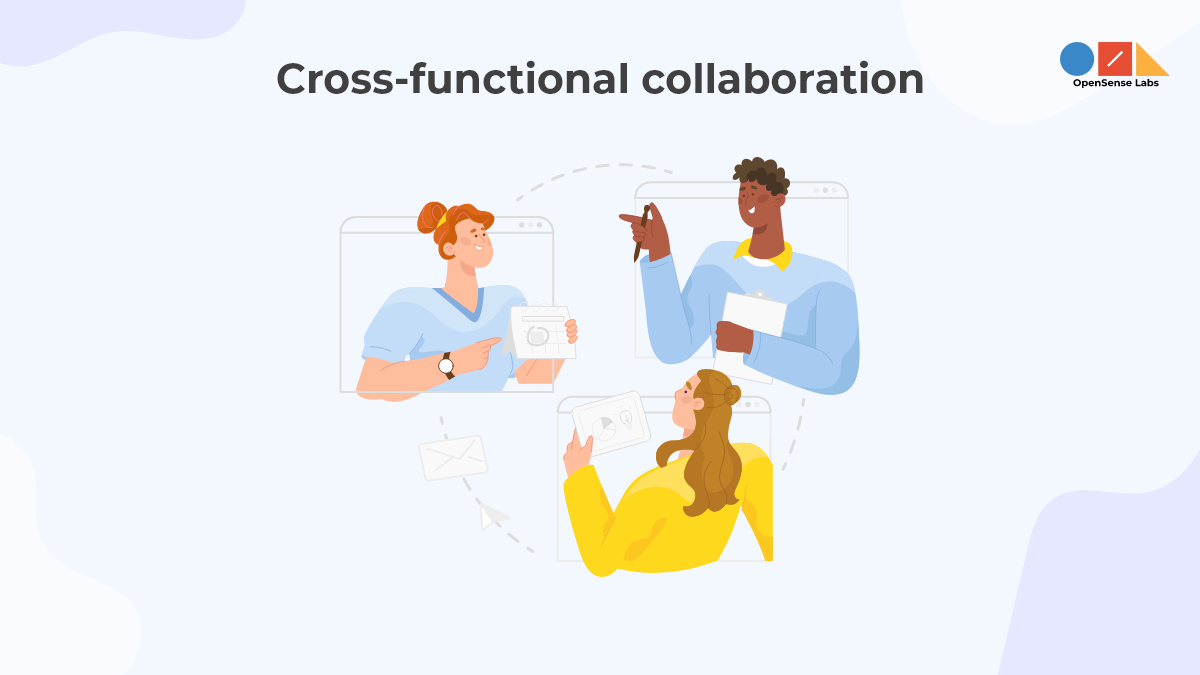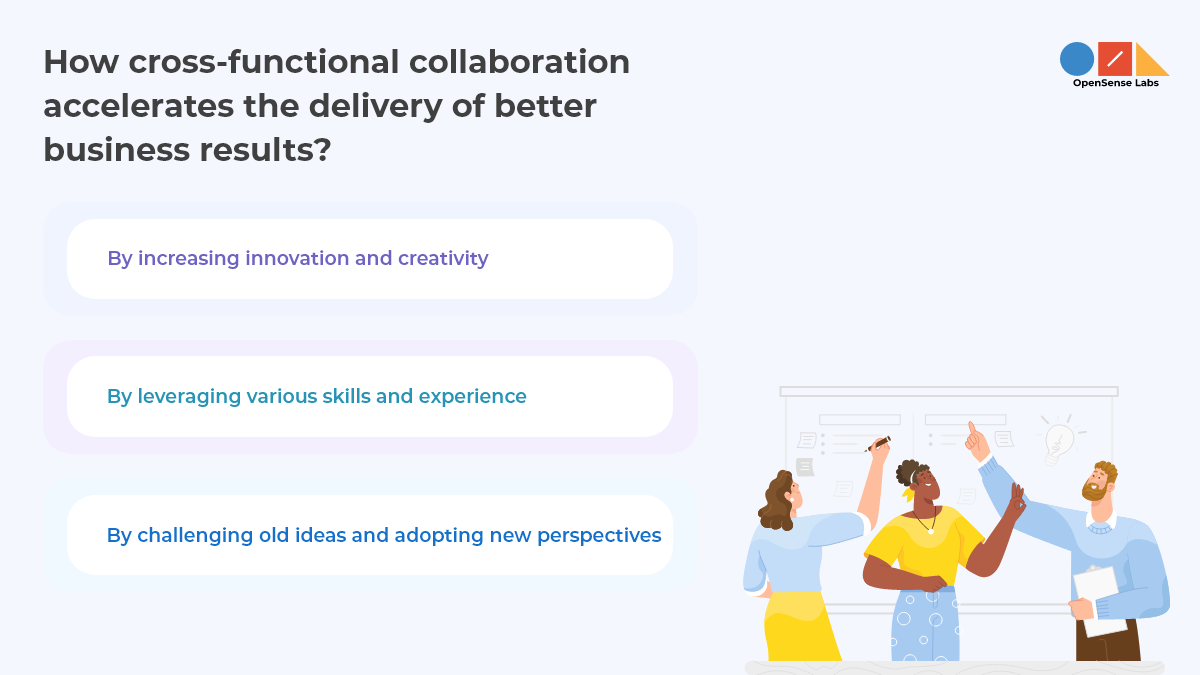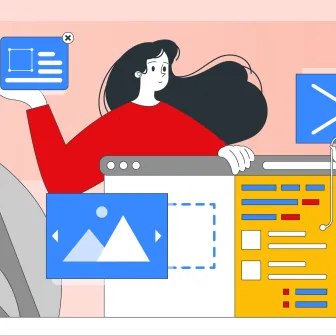Cross-functional collaboration plays a vital role in accelerating the delivery of better results for consumers. It promotes innovation by allowing people from various fields of expertise to come together and share different views and perspectives.
Well, it isn’t a new thing to discuss, and I suppose you must be knowing it from before. But here what matters is are you aware of the ways in which such collaborations empower organization outcomes?
This piece of work will guide you through all such information and show you some examples of practicing cross-functional collaboration within your organization.
I hope that today my article works as an inspiration for your teams and makes them value and consider cross-functional collaboration a priority.
The real scenario of cross-functional collaboration in the current times

The current global crisis caused due to the pandemic showed that when teams come together and work beyond disciplinary and organizational boundaries, things can be handled well.
You must have witnessed that doctors worked with government leaders, nurses worked with supply-chain managers and global businesses at the forefront of the crisis even collaborated outside their organization, by utilizing their resources and ideas for the contribution to humanity.
But have you ever thought about what’s happening inside the organization? Have the business functions collaborated to identify and solve the major issues of the company, regardless of COVID-19? Have they used the major technologies such as data analytics, data sharing, and cloud to drive better outcomes?
According to Accenture’s Industry X.0 Research, there are various established companies that are struggling hard with cross-functional collaboration.
Prior to the pandemic, in a survey conducted among 1,500 global senior and C-level executives of industrial companies, 75% expressed that different business functions (engineering, R&D, sales, marketing, and operations) can be seen competing against each other rather than collaborating for better outcomes.
Cross-functional collaboration accelerating delivery of better business outcomes
Here is how cross-functional collaboration accelerates the delivery of better business results.

An increase in innovation and creativity
By practicing cross-functional collaboration the innovation can be increased since people with different perspectives come together and share their views and ideas.
Rather than focusing on ideas coming from a single team, if we include or consider various unique ideas and solutions from different teams, then it automatically increases the creativity level to a great extent.
You should give the privilege to your employees at every level to actively participate in discussions and think out of the box, enhancing creativity.
With such collaborations, you can encourage creative thinking and help your organization accomplish new heights and success.
Every individual approaches a situation differently in terms of expertise, knowledge, and experience.
So, such collaborations within the organization can take innovation to a whole new level and brainstorm fresh ideas and solutions. Read how a diverse design team encourages innovation to know more.
Leveraging various skills and experience
If you allow people from different teams to collaborate and work together towards a common goal then in a way, you’re enabling them to learn from each other.
As everyone has their own specialized skills and knowledge, the professional can get a better understanding of various skill sets from other functional teams and bring better outcomes and performance for the organization.
This is how collaboration can be regarded as a good way to collective learning and development.
Challenging old ideas and adopting new perspectives
At times you do not want to come out of your comforts and find it easy to follow old work processes and methodologies.
But this stops you from trying something new and blocks your innovation and creativity.
So, if you want to bring the best out of your people, then you surely have to conduct cross-functional collaborations and value fresh ideas and perspectives, and even implement them at your organization.
You can challenge your company’s rigid processes and bring a change that is essentially needed in this highly competitive world. Learn how to keep your design mind fresh with new ideas flowing in.
Examples of cross-functional practices
Do you want to look at the cross-functional practices more closely?
Here are some of the examples that depict the real scenario of how different teams work together with a common goal and objectives.
Let me first start with a general example which is found in most of the companies i.e., Design and Tech Debt Audit.
It is observed that professionals are well aware of the concept of technical debt, but are not much familiar with the design debt. So, what is exactly a design debt?
Well, design debt can be considered as the accumulation of design-related instabilities within a product that happens naturally over time.
Now, the developers, designers, and quality analysts capture both design and technical debt once they observe them and then work together by regularly reviewing and emphasizing the collected items depending on their understanding and experience.
Therefore, this is how the different teams collaborate to accomplish the set company targets and endeavors. Read about the collaboration between designers and developers during code review to know more.
Now, I will take you through one of the collaboration practices that takes place between designers and developers here at OpenSense Labs.
When it comes to product quality, and customer satisfaction both our designers and developers use a strong brainstorming tool, FigJam that allows team members to get completely involved in the collaboration process.
It offers live interaction between designers and developers starting from ideation to implementation, accelerating the workflow collaboration. Using FigJam our teams effortlessly collaborate and reach up to our client’s expectations by developing remarkable projects and services.
I suppose with these simple yet informative examples you got a glimpse of how the cross-functional practices look like. And hope you feel motivated to apply such smooth collaborations among the different teams at your organization and strive towards accomplishing business excellence and transformation.
Learn more:
- Collaboration in remote working
- Team health and productivity in businesses
- Strengthen your team building with DevOps culture
- Building an inclusive team with agile techniques
- How JIRA can be used as a team building platform
Conclusion
My intention is not to rush you up for anything. I mean if your teams aren’t ready for such collaborations at the moment then it’s completely fine.
Since it takes time to make an honest effort and embrace change after following a rigid process or method.
But I would suggest you prepare your teams for some experimentation and let them share their unique brainstorming ideas and make cross-functional collaboration great fun.
Subscribe
Related Blogs
UX Best Practices for Website Integrations

Website Integrations determine whether users stay engaged or abandon a site. I experienced this firsthand with a delivery…
How design thinking acts as a problem solving strategy?

The concept of design thinking is gaining popularity these days since people across different industries are using it as a…
10 major challenges that come across during an agile transformation

It’s no longer a mystery that agile was created as a response to the various concerns that the traditional waterfall…




